Artist’s work

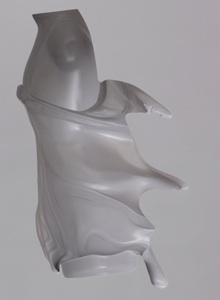
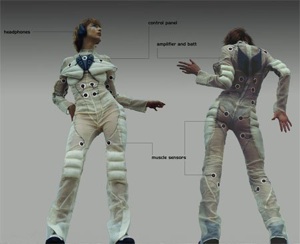
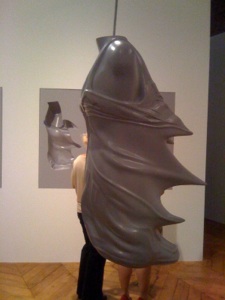
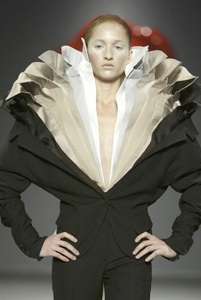
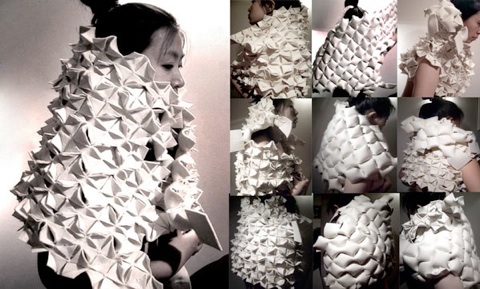

The Centre for Fashion Science would like to invite you to a special seminar on clothing responding to space and emotion by practitioner and PhD candidate – ‘Garment Design Integrated with Movement Qualities, Dynamic Bodily Expression and Emotion’ Eunjong Jeon from the Department of Design, Curtin University of Technology, Perth, Australia. Eunjong has offered to share her research with us on her short list to London.
On the eve of London fashion week, Spring Studios held the opening of their latest Exhibition B Side by Hussein Chalayan. Showing never before seen pieces, this exhibitions shows the designers exploration into the body, movement and voyeurism as well as demonstrating his fascination with form and process.
Imagine this…for every move you make, you can create a unique sound, cool huh? I bet DJ will love this PACER suit concept. The Pacer suit receives electro impulses that appear when muscles are activated (movement), amplifies them and turns them into sound with the help of the sensors attached to muscles. Each impulse is goes through the sensors via amplifiers (boxes on the back) to control panel where we can control volume, type of sound, select rhythm to follow…With this suit it is possible to produce harmonious rhythm and melody by dancing. These sounds can be heard through headphones connected to the control panel (box on the front) or through the speakers connected to the control panel by infrared rays.
This exhibition explores the common visual and intellectual principles that underlie both fashion and architecture. Both disciplines start with the human body and expand on ideas of space and movement, serving as outward expressions of personal, political, and cultural identity. Architects and fashion designers produce environments defined through spatial awareness—the structures they create are based on volume, function, proportion, and material. Presenting the work of international fashion designers and architects, the exhibition examines themes such as shelter, identity, tectonic strategies, creative process, and parallel stylistic tendencies including deconstruction and minimalism. The exhibition is curated by MOCA Curator of Architecture & Design Brooke Hodge and is accompanied by a fully illustrated catalogue.
from www.moca.org
I had been thinking about body movement and how I can analyse the shapes created by body movement. Almost mapping the body, I began to think about using light to do this and came across this image.
Forsythe imagines lines in space that could be bent, or tossed, or otherwise distorted. It is almost like a mark or trail being left behind which is invisible to the eye, like an extension of the body. This image has got me thinking, I want to experiment now with maybe glow sticks or lights attached to the body and photograph it in the dark with a slow shutter speed. I think it will be interesting to see what results I get. I also like the idea of an extension of the body.


